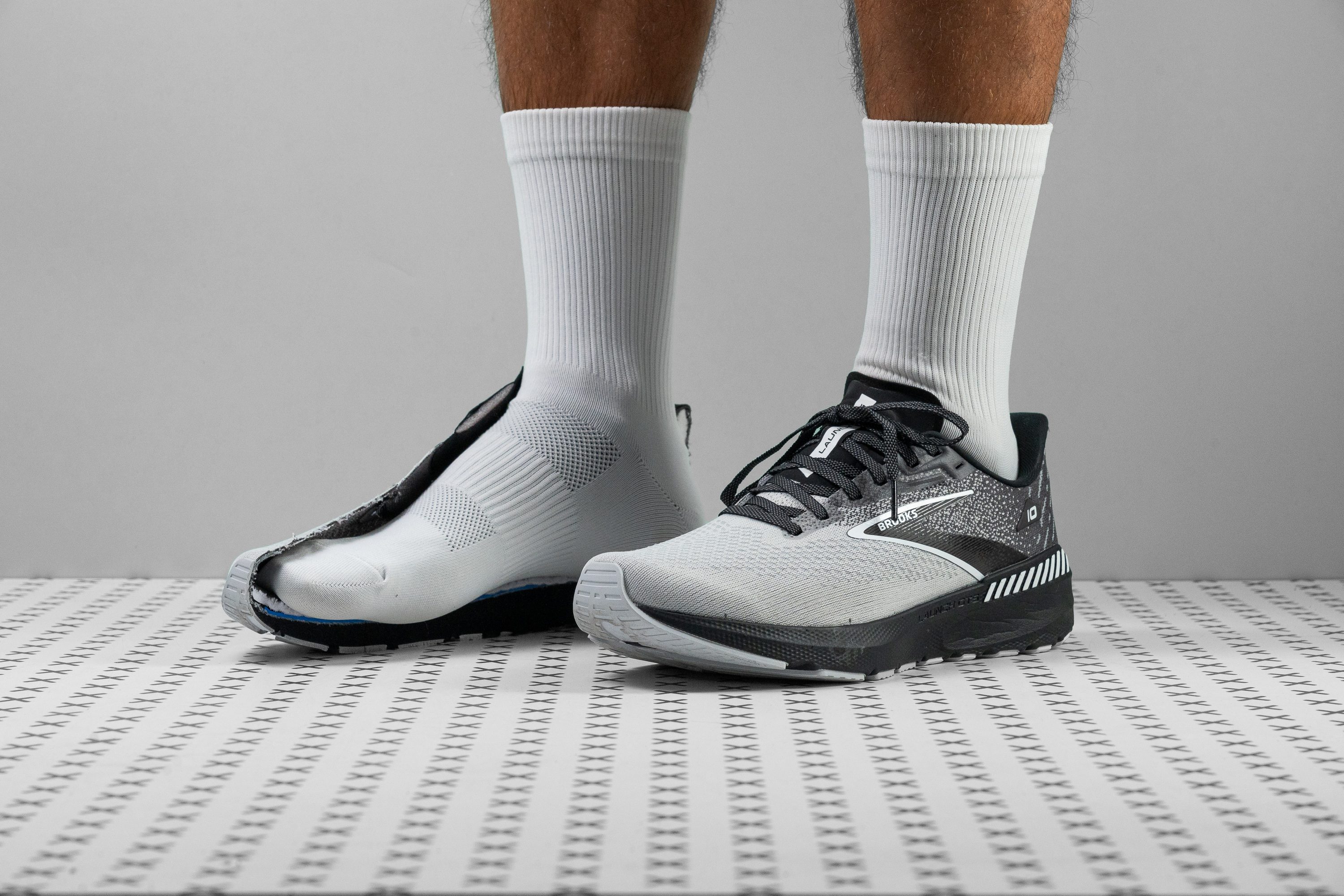Our verdict
Pros
- Offers excellent stability with GuideRails technology
- Priced attractively at only $110
- Features a durable outsole
- Incredibly lightweight!
- Boasts a comfortable upper
- Provides a fun and responsive ride
- Suitable for all kind of paces
- Offers great grip on most surfaces
Cons
- Suffers from lack of breathability
- Becomes too stiff in winter
Audience verdict
Comparison
The most similar running shoes compared
+ + Add a shoe | |||||
|---|---|---|---|---|---|
| Audience score | 84 Good! | 85 Good! | 80 Good! | 85 Good! | |
| Price | £110 | £140 | £110 | £140 | |
| Pace | Daily runningTempo | Daily running | Daily running | Daily running | |
| Shock absorption | - | Moderate | High | - | |
| Energy return | - | Moderate | Moderate | - | |
| Traction | - | High | High | - | |
| Arch support | Stability | Stability | Stability | Stability | |
| Weight lab Weight brand | 8.5 oz / 241g 8.4 oz / 238g | 10.4 oz / 295g 10.5 oz / 298g | 8.1 oz / 231g 8 oz / 228g | 12.5 oz / 353g 12.2 oz / 346g | |
| Lightweight | ✓ | ✗ | ✓ | ✗ | |
| Drop lab Drop brand | 12.2 mm 10.0 mm | 9.3 mm 8.0 mm | 9.4 mm 5.0 mm | 12.1 mm 12.0 mm | |
| Strike pattern | Heel | HeelMid/forefoot | HeelMid/forefoot | Heel | |
| Size | True to size | Slightly small | Slightly small | Slightly small | |
| Midsole softness | Soft | Soft | Soft | Firm | |
| Difference in midsole softness in cold | Normal | Big | Big | Small | |
| Toebox durability | Decent | Decent | Bad | Decent | |
| Heel padding durability | Good | Bad | Decent | Good | |
| Outsole durability | Good | Decent | Bad | Good | |
| Breathability | Moderate | Moderate | Breathable | Moderate | |
| Width / fit | Medium | Medium | Narrow | Medium | |
| Toebox width | Medium | Medium | Narrow | Medium | |
| Stiffness | Stiff | Moderate | Moderate | Stiff | |
| Torsional rigidity | Stiff | Moderate | Stiff | Stiff | |
| Heel counter stiffness | Moderate | Stiff | Stiff | Moderate | |
| Rocker | ✗ | ✗ | ✓ | ✗ | |
| Heel lab Heel brand | 35.4 mm 34.0 mm | 36.8 mm 38.0 mm | 36.0 mm 33.0 mm | 36.5 mm 36.0 mm | |
| Forefoot lab Forefoot brand | 23.2 mm 24.0 mm | 27.5 mm 30.0 mm | 26.6 mm 28.0 mm | 24.4 mm 24.0 mm | |
| Widths available | NormalWide | NarrowNormalWideX-Wide | NormalWide | NarrowNormalWideX-Wide | |
| Orthotic friendly | ✓ | ✓ | ✓ | ✓ | |
| Season | All seasons | All seasons | SummerAll seasons | All seasons | |
| Removable insole | ✓ | ✓ | ✓ | ✓ | |
| Ranking | #236 Bottom 36% | #215 Bottom 41% | #303 Bottom 18% | #221 Bottom 40% | |
| Popularity | #301 Bottom 18% | #35 Top 10% | #80 Top 22% | #161 Top 44% |
Who should buy
We suggest checking the Brooks Launch GTS 10 if you:
- Have been wanting the non-GTS Launch 10 but need stability as overpronators
- Are looking for a stable daily trainer that's not heavy at all
- Enjoy fast and agile runs and want the extra support from the GuideRails technology
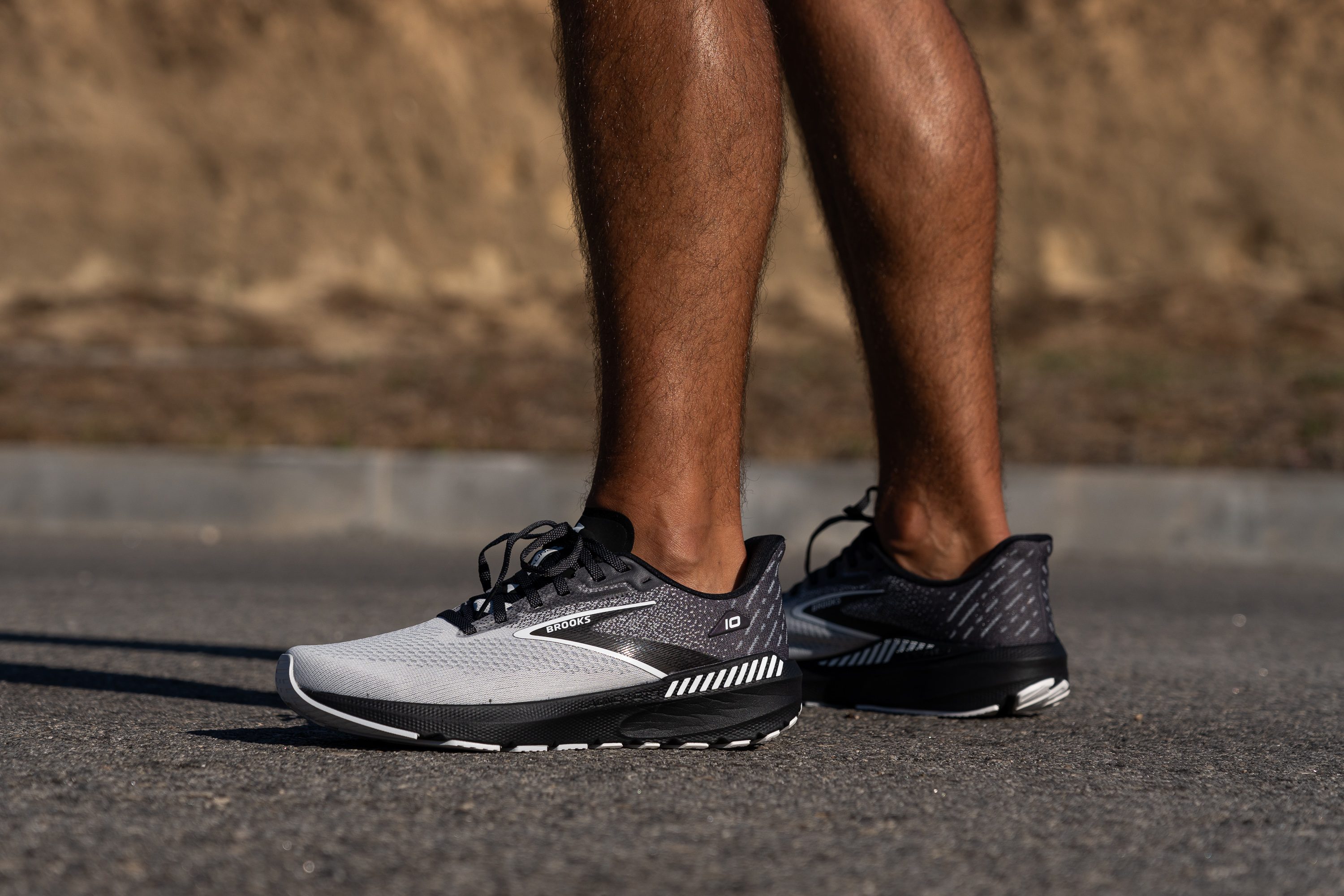
Who should NOT buy
If you're a neutral runner, the Brooks Launch 10 might be a better choice for you, as it has a wider upper and an even lower weight. We think that getting the stability-oriented version might not make sense in this case.
Additionally, if you run in extreme climates, you might want to skip this one. The foam becomes too stiff in winter, and the upper isn't breathable enough for summer.
Instead, we recommend the Brooks Adrenaline GTS 23, which offers superb ventilation and performs better in cold temperatures with the same—or even better—stability features.
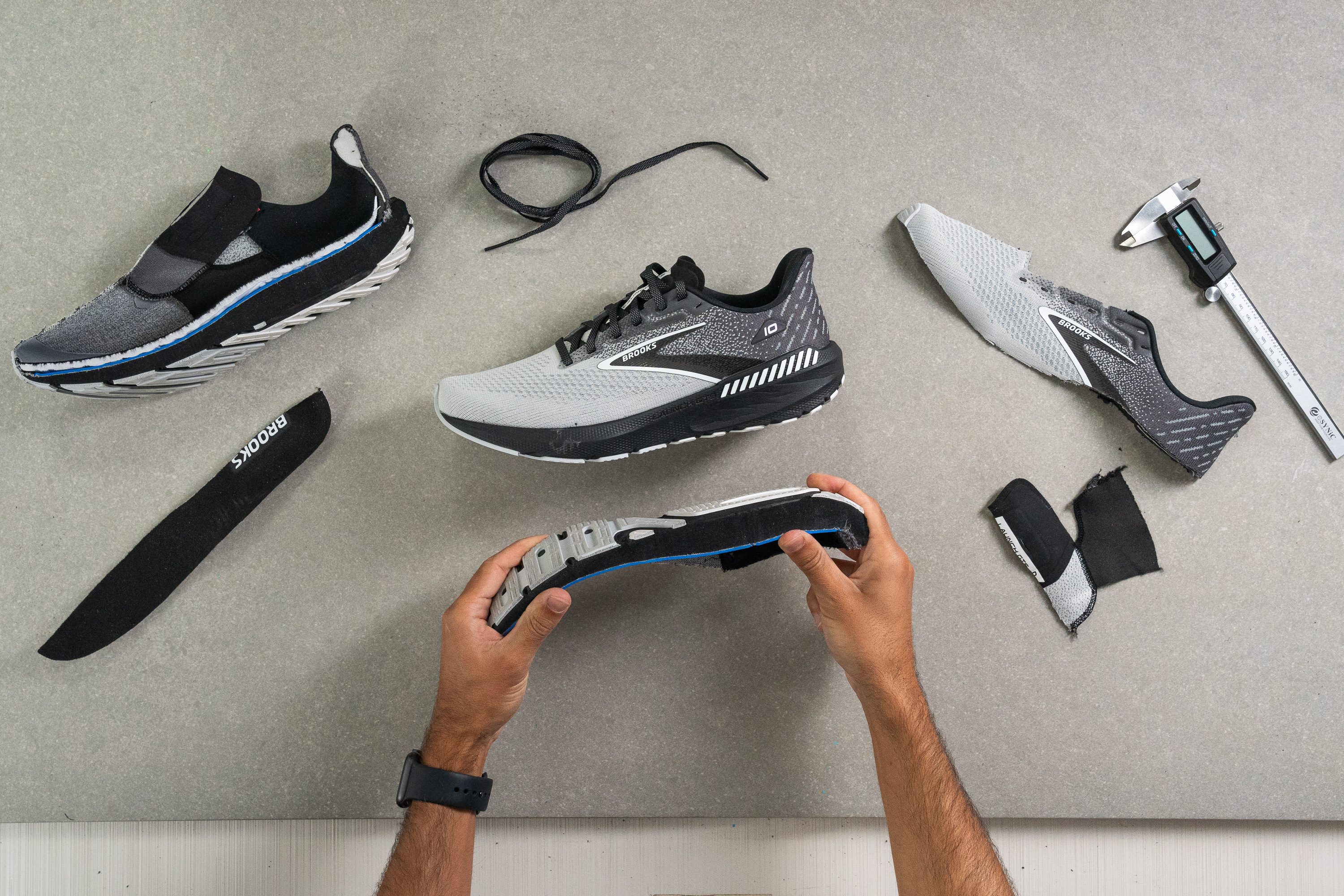
Cushioning
Heel stack
In comparison to its neutral counterpart, the stack height in the heel has increased by 1.6 mm, as we measured it at 35.4 mm. This extra cushioning is a welcome feature without adding much bulk.

| Launch GTS 10 | 35.4 mm |
| Average | 34.8 mm |
Forefoot stack
The forefoot stack measures 23.2 mm, which is a bit less than what's found in the neutral version.
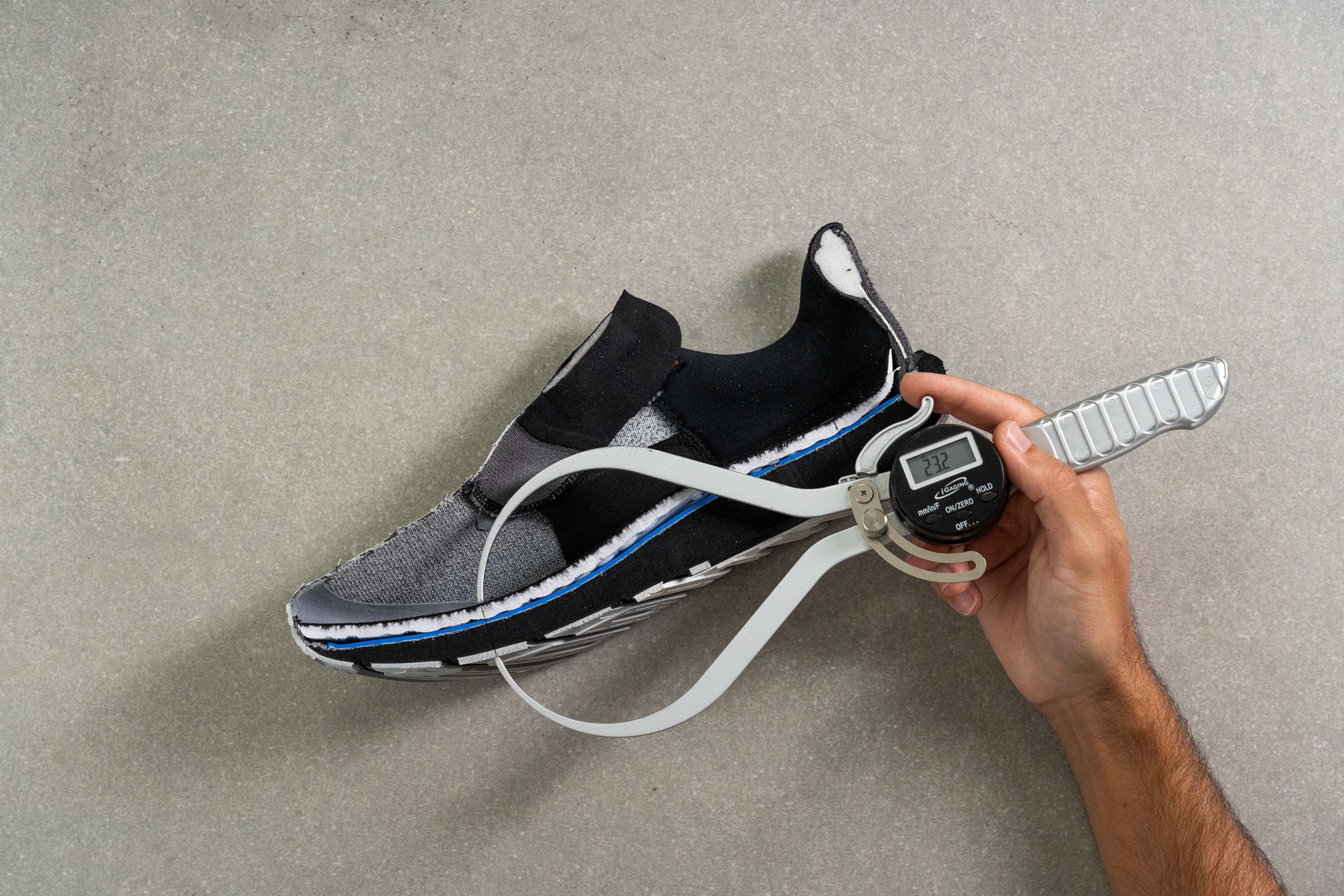
| Launch GTS 10 | 23.2 mm |
| Average | 26.2 mm |
Drop
More foam in the heel and less in the forefoot obviously lead to an even higher heel-to-toe drop. The Launch GTS 10 proves this point, coming in at 12.2 mm.
It's a real treat for heel strikers who are fans of high drops, but probably a bit too much for midfoot and forefoot strikers. If you need a stable ride with less drop, check out the Hoka Arahi 6.
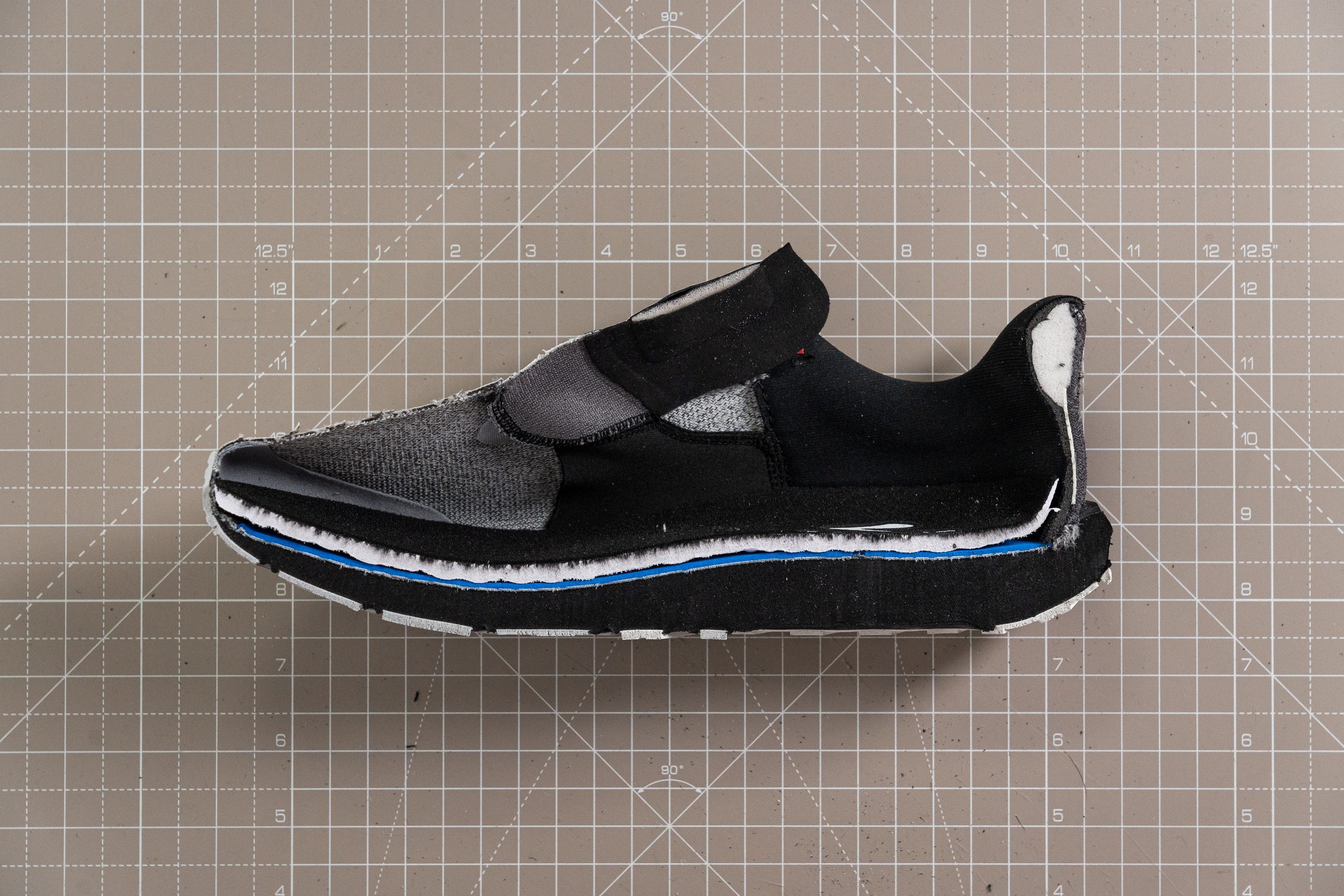
| Launch GTS 10 | 12.2 mm |
| Average | 8.6 mm |
Midsole softness
When we move to the midsole, we find the exact same DNA foam as in the neutral version, so there's no difference between the two models in this regard.
This balanced compound aims to provide comfort without becoming excessively plush. The measurement of 19.6 HA, confirms this.
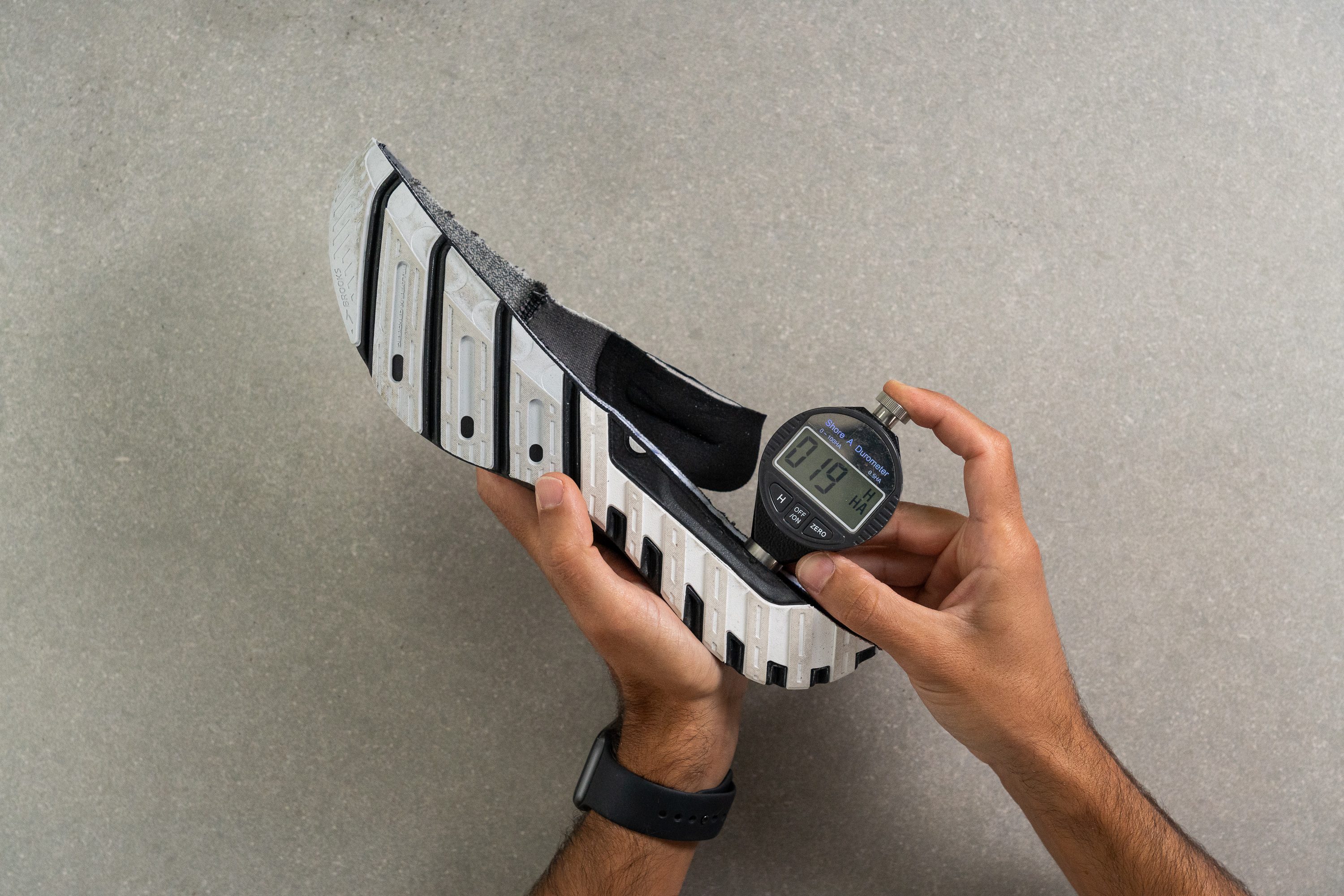
| Launch GTS 10 | 19.6 HA |
| Average | 20.4 HA |
Size and fit
Size
Brooks Launch GTS 10 fits true to size (131 votes).
Width / Fit
Manufacturers have secret tricks to make their shoes more stable, and we're here in the lab to reveal one to you. They often play around with the upper and midsole of the shoe, and the Launch GTS 10 is a perfect example to show this.
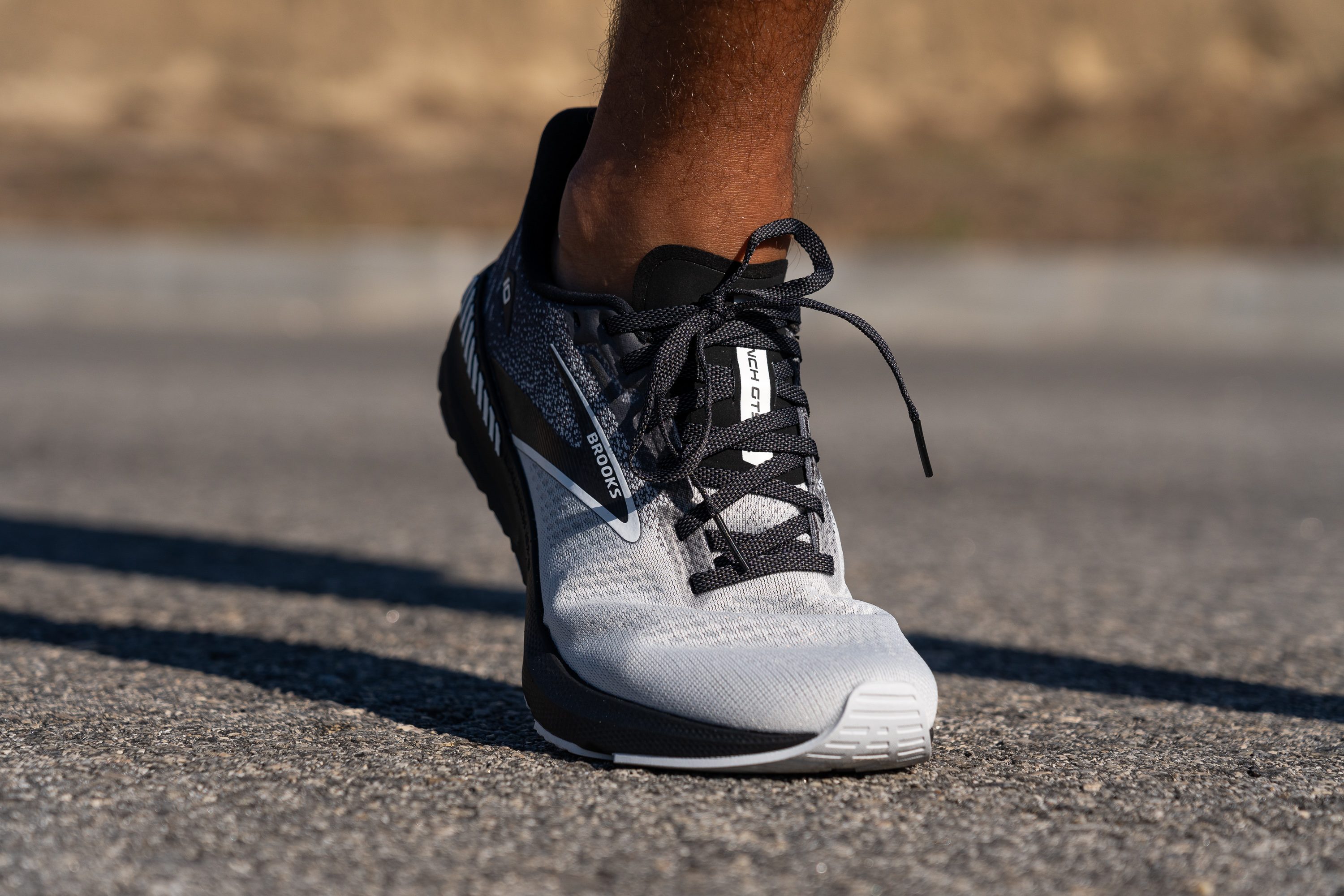
At its widest part, the upper of the Launch GTS 10 measures 98.9 mm, less than the 100.5 mm in the neutral counterpart. Why is that? If the upper is made narrower, it creates more space on both sides of the shoe, which helps with stability.
While 1.6 mm might not seem like much, when it's combined with the GuideRails, it makes a big difference. However, because of this, the shoe fits more tightly compared to the non-GTS version.
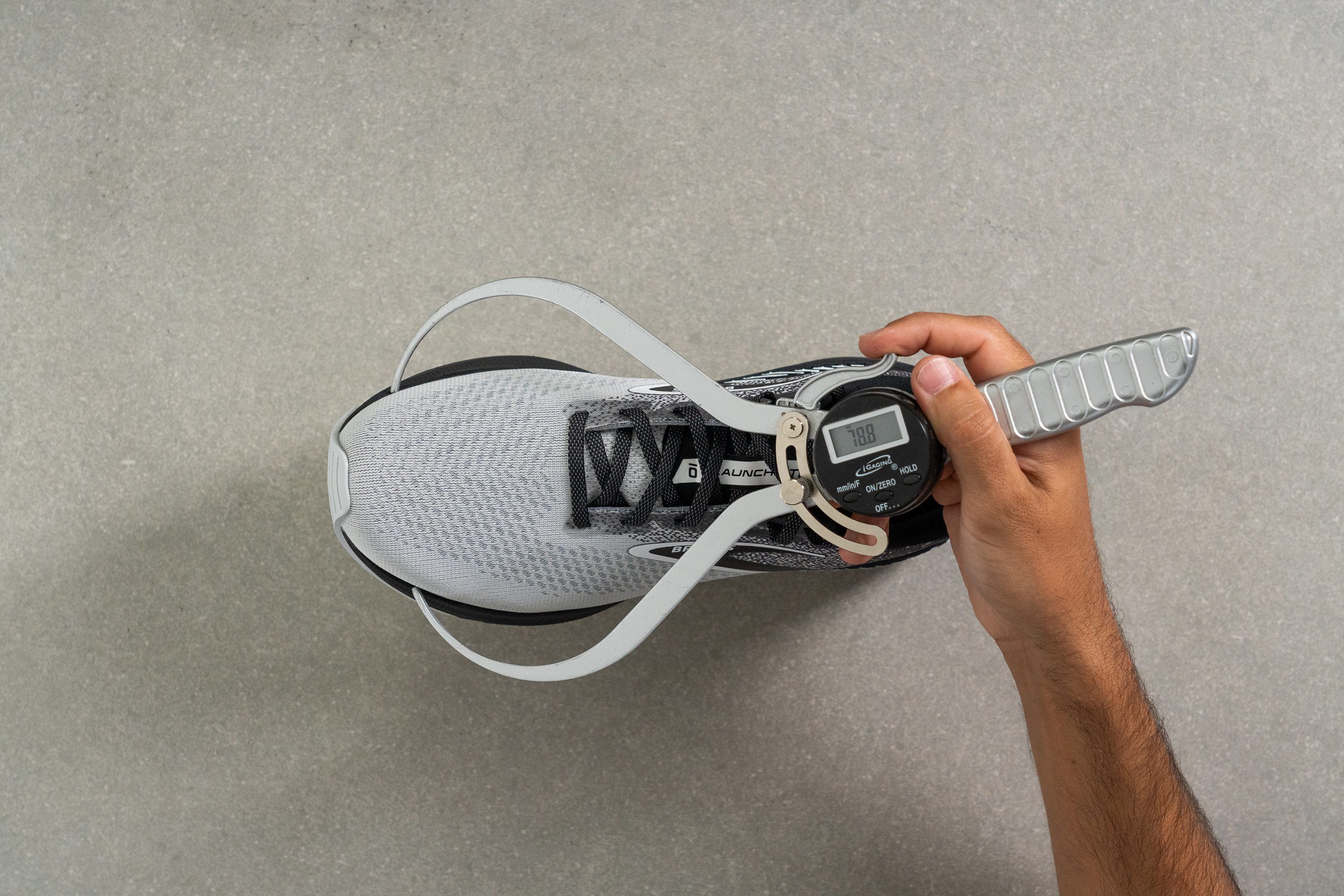
This test follows an older methodology, which is why you don't see recently tested shoes in the chart. Results from different methodologies can not be compared.
| Launch GTS 10 | 98.9 mm |
| Average | 98.5 mm |
Toebox width
In the area of the big toe, we measured the upper part of the shoe at 78.8 mm. This width is generous enough to accommodate most feet comfortably.
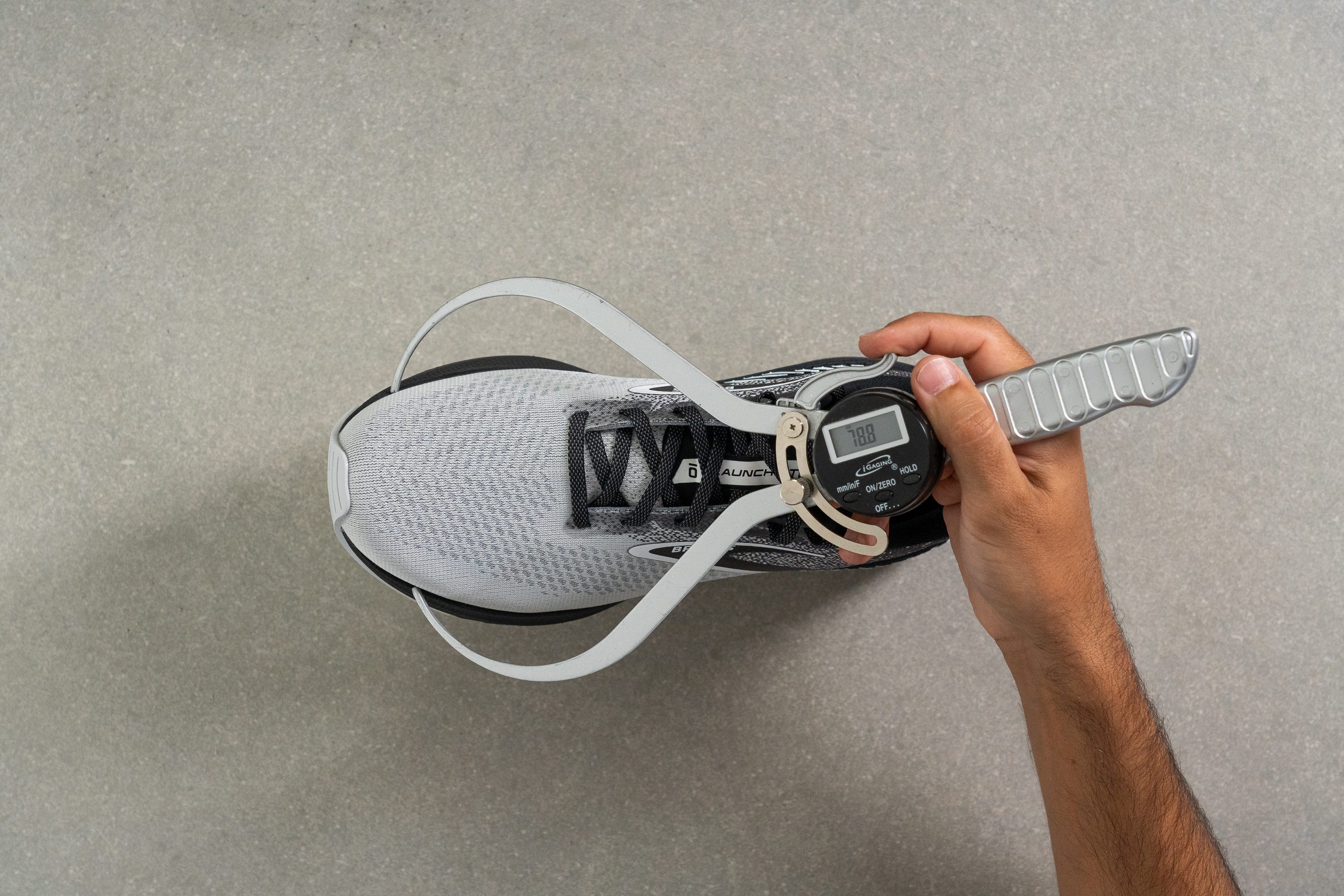
This test follows an older methodology, which is why you don't see recently tested shoes in the chart. Results from different methodologies can not be compared.
| Launch GTS 10 | 78.8 mm |
| Average | 78.4 mm |
Flexibility / Stiffness
Even though this is a stability shoe, it's meant to be a lightweight daily trainer that focuses on comfort, so it shouldn't feel stiff at all.
We found that to be true, as we only had to use 19.1N to move it to bend it to the measurement point.
This test follows an older methodology, which is why you don't see recently tested shoes in the chart. Results from different methodologies can not be compared.
| Launch GTS 10 | 19.1N |
| Average | 28.1N |
Stiffness in cold (%)
Under cold temperatures, the shoe doesn't perform as well as we'd like. We had to use nearly double the force, at 33.2N, to move it to the 90-degree measurement point.
The 73.7% increase is a disappointing figure, resulting in a subpar performance that greatly changes how the shoe feels when the weather gets cold.
| Launch GTS 10 | 74% |
| Average | 33% |
Weight
More foam in the heel and less in the forefoot obviously lead to an even higher heel-to-toe drop. The Launch GTS 10 proves this point, coming in at 12.2 mm.
It's a real treat for heel strikers who are fans of high drops, but probably a bit too much for midfoot and forefoot strikers. If you need a stable ride with less drop, check out the Hoka Arahi 6.
Weight
At 8.50 oz (241g), the shoe has gained a little weight due to its stability features, but only by 0.4 oz (11g).
This increase is so minimal that we believe you won't even notice it.
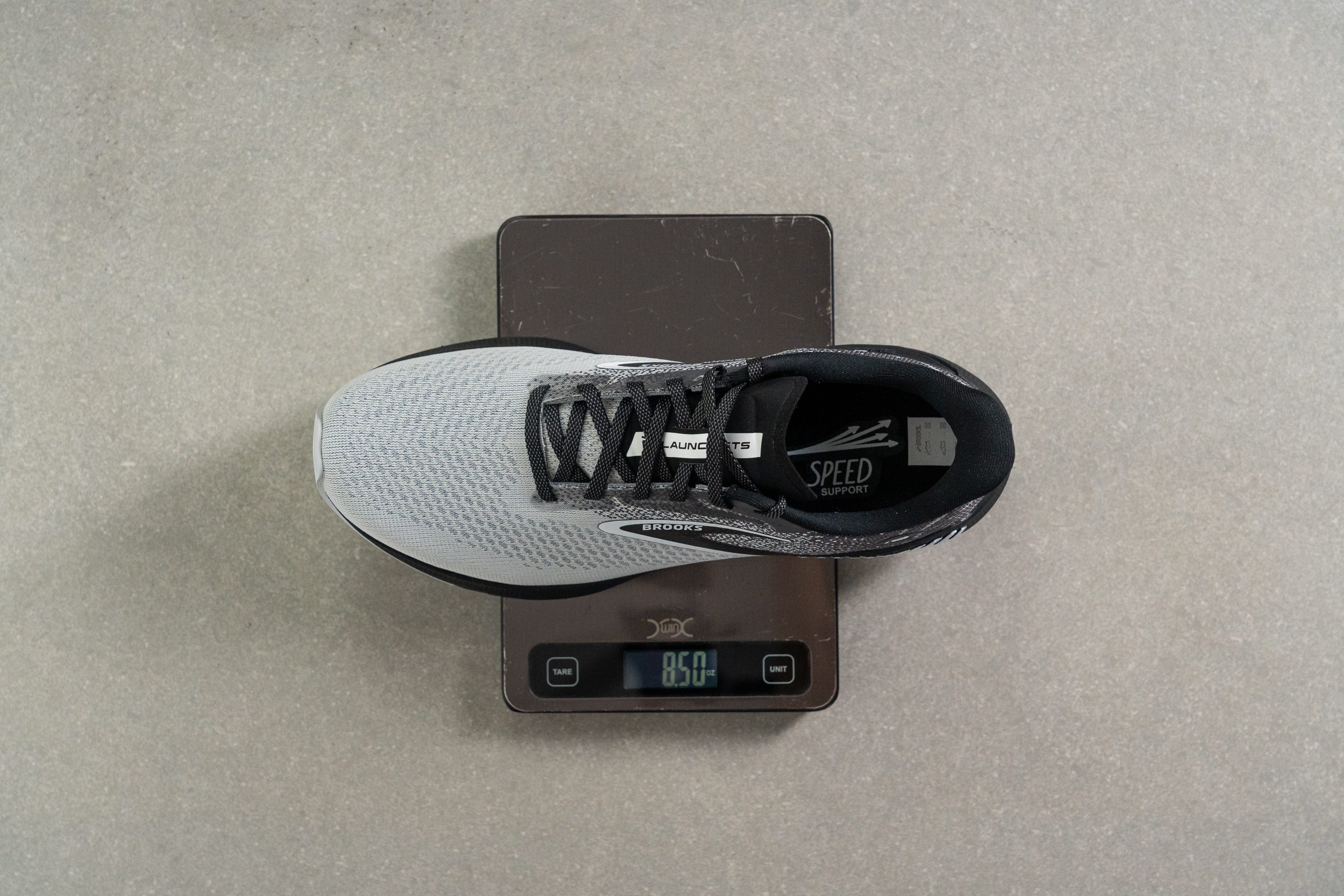
| Launch GTS 10 | 8.5 oz (241g) |
| Average | 9.3 oz (264g) |
Breathability
The breathability in the Brooks Launch 10 GTS falls right in the middle. We've given it a 3/5 rating in our test, and our lab-based smoke-pumping test shows that the airflow isn't as good as we hoped.
At first glance, it seemed like the shoe had ventilation holes in the upper.
But our light test revealed that they aren't as effective as those in other shoes like the Saucony Ride 16.
When we looked closer under the microscope, we discovered the real issue. Brooks used an engineered mesh that, upon closer inspection, is thicker than it appears.
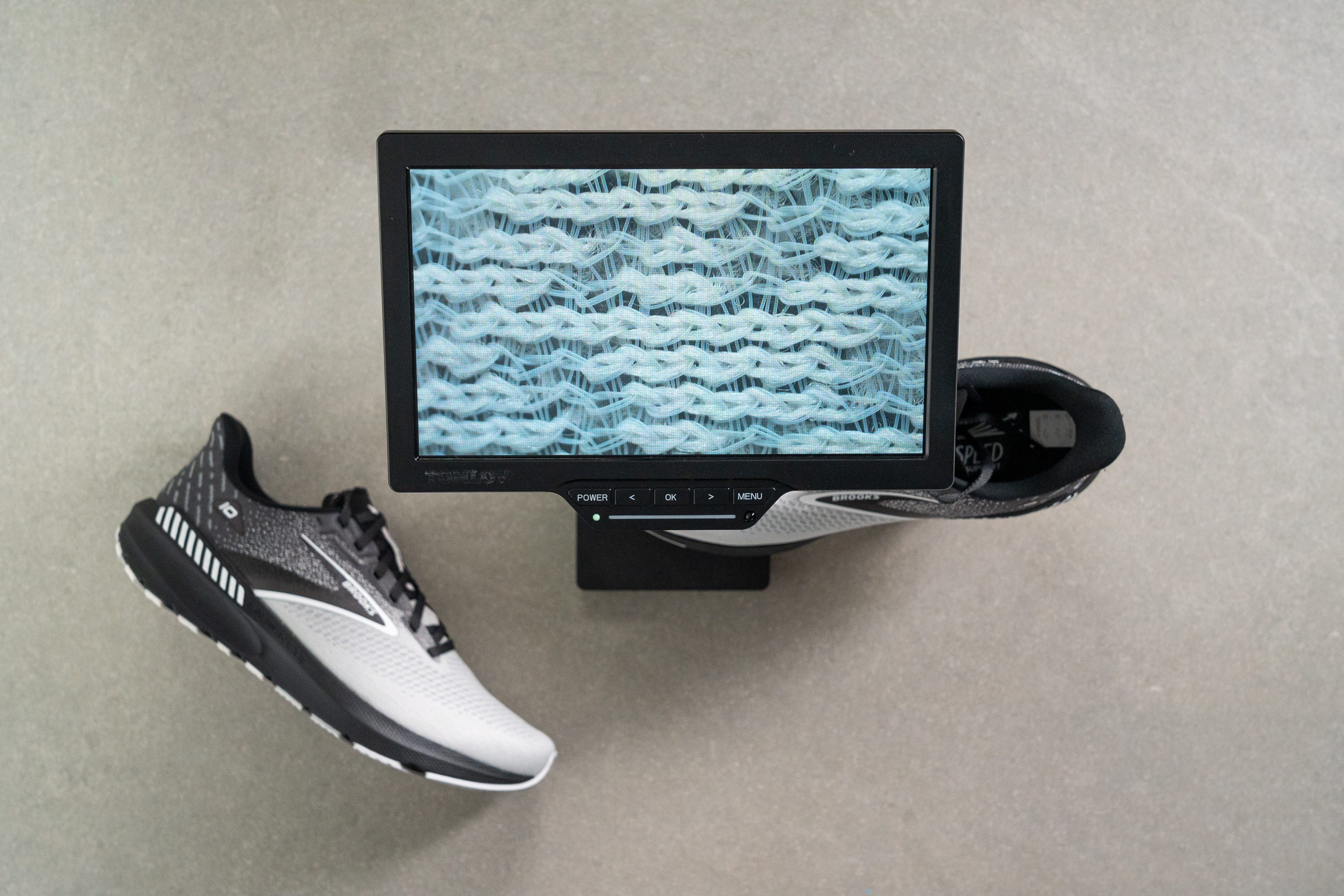
There isn't much room for heat and humidity to escape, so the shoe's breathability is just average, like we mentioned before. But can we talk about this picture of the upper? Wow, it looks so different and incredible from that close!
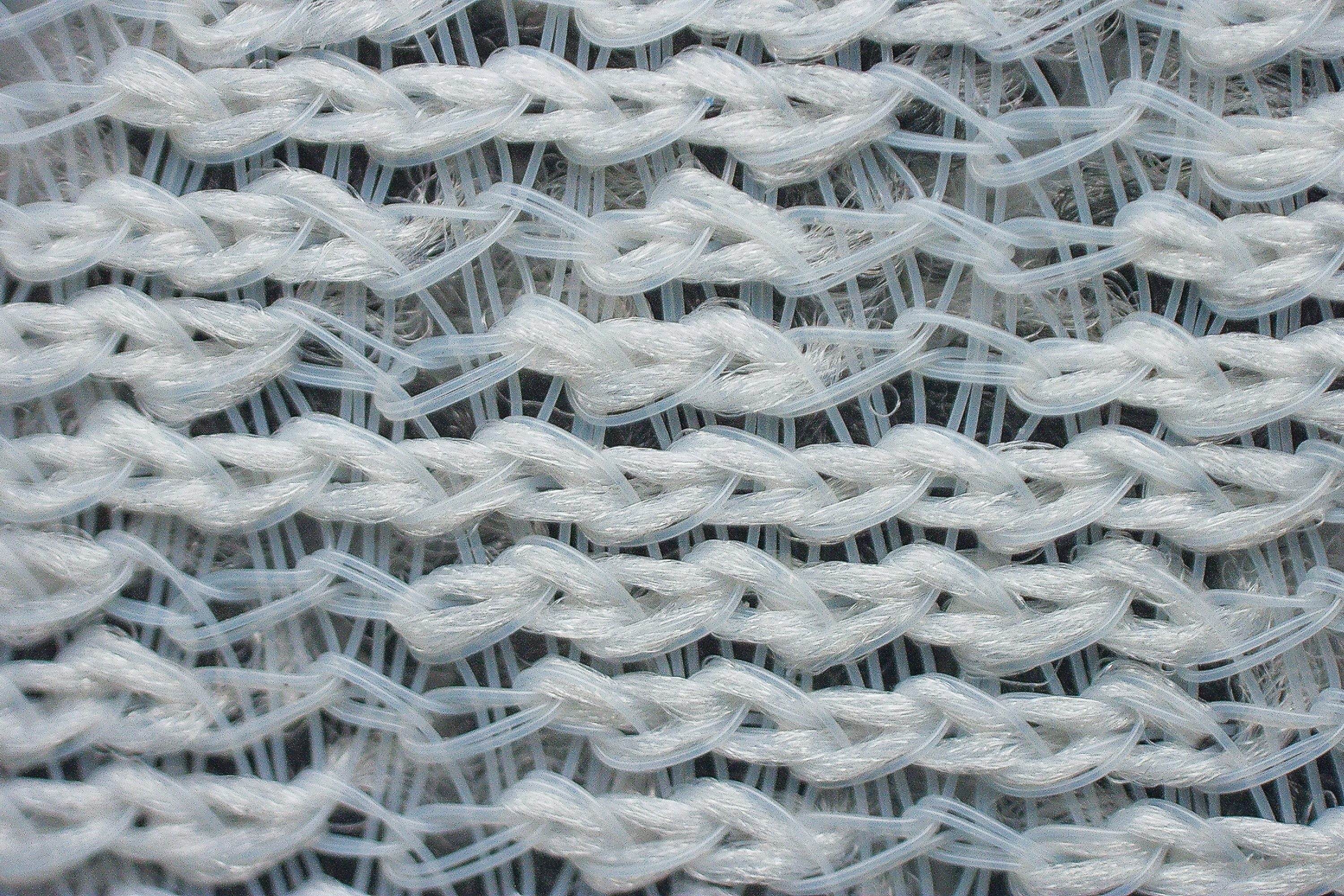
| Launch GTS 10 | 3 |
| Average | 3.7 |
Stability
Being a shoe created to be as light as possible—a goal it achieves—one of the trade-offs is the width of the midsole. That's why we find ourselves with a shoe that, despite being focused on stability, is not excessively wide, measuring at 113.8 mm.
Lateral stability test
The GTS acronym in Brooks represents "Go-To-Stability," and it's an area where this shoe truly excels. We found the shoe to be impressively stable, instilling confidence in us with every stride.
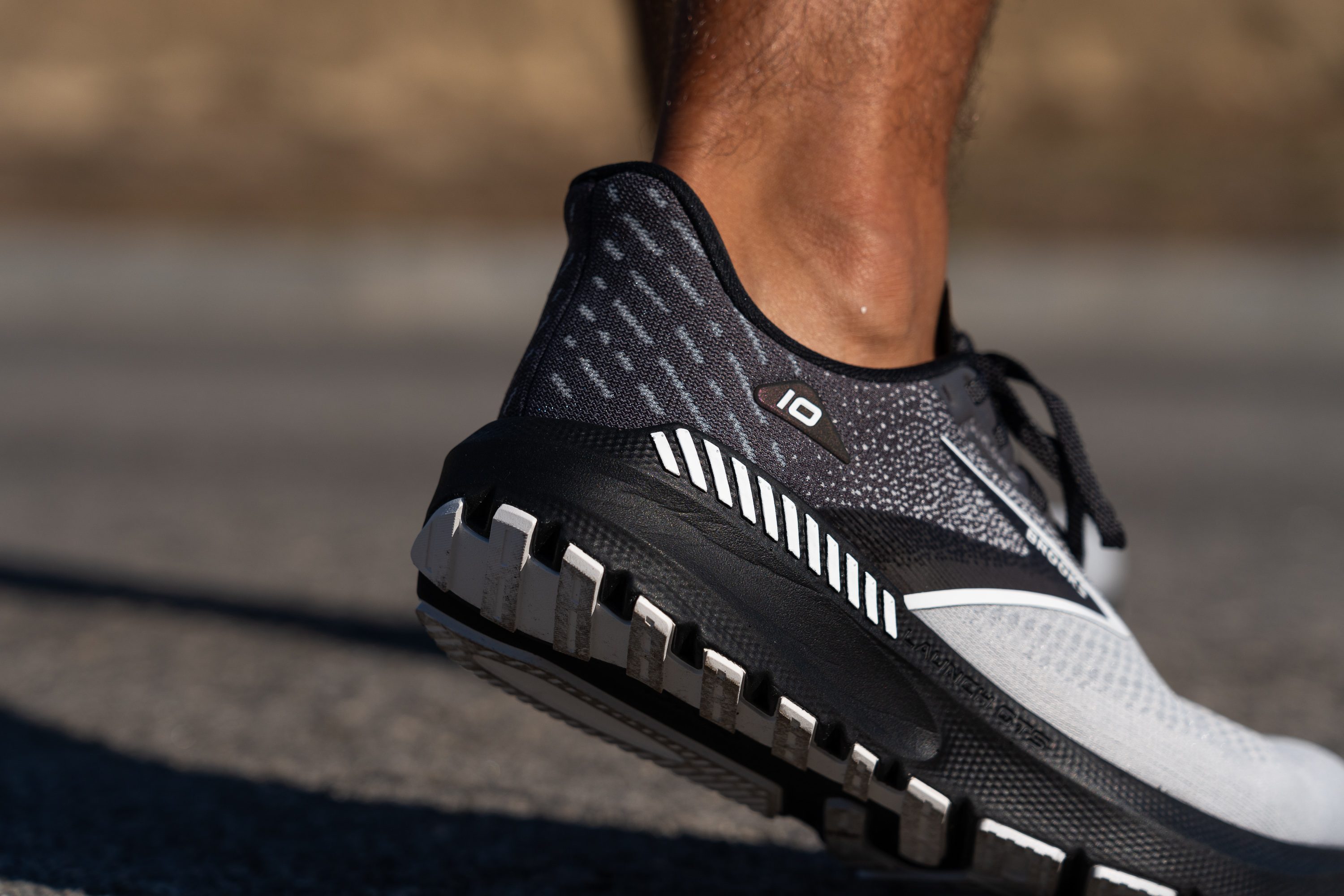
The impressive stability in this shoe is made possible by the Brooks GuideRails technology. It consists of two specially designed plastic pieces that work to correct overpronation.
Torsional rigidity
If you try to make a shoe more stable, one of the simplest methods is to make it less flexible from a torsional standpoint. That's exactly what Brooks has done with the Launch GTS 10.
When we gently twisted the shoe, we found it to have a rating of 4 out of 5 in this test.
| Launch GTS 10 | 4 |
| Average | 3.5 |
Heel counter stiffness
The heel counter surprised us. We were expecting another 4 out of 5 result, but Brooks chose to keep the exact same heel from the neutral version (3/5) because it's really comfortable.
We believe this is a smart approach, as the shoe already has enough stability with this one. So why would they make it less comfortable with a heel counter that's too stiff?
| Launch GTS 10 | 3 |
| Average | 2.9 |
Midsole width - forefoot
Being a shoe created to be as light as possible—a goal it achieves—one of the trade-offs is the width of the midsole. That's why we find ourselves with a shoe that, despite being focused on stability, is not excessively wide, measuring at 113.8 mm.
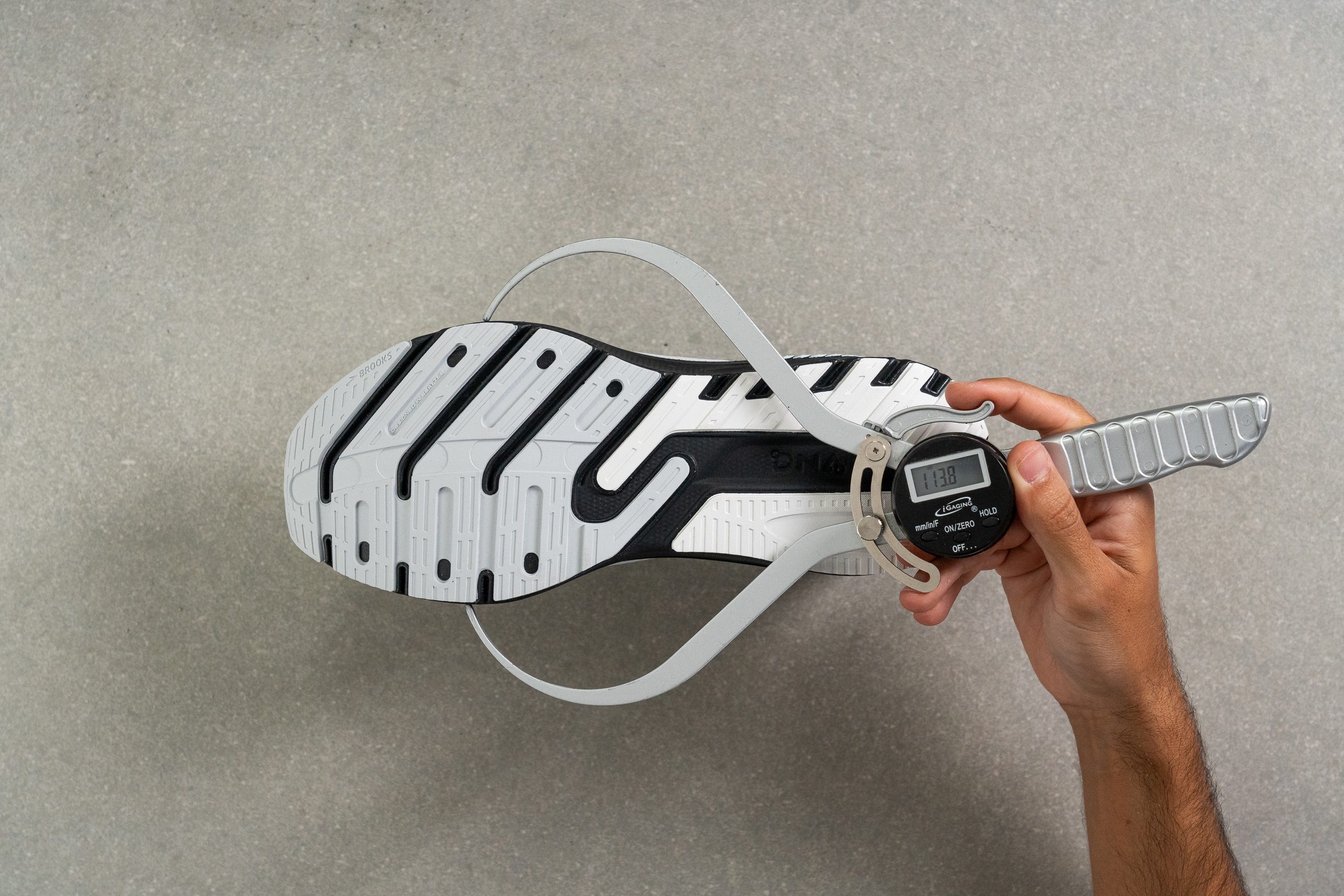
| Launch GTS 10 | 113.8 mm |
| Average | 114.4 mm |
Midsole width - heel
The heel of the shoe is narrower than most others, but we noticed that it's still 3.6 mm wider than its neutral non-GTS counterpart (86.8 mm).

| Launch GTS 10 | 86.8 mm |
| Average | 90.7 mm |
Durability
Toebox durability
Brooks uses an engineered mesh that is thin and comfortable, but this usually means poor durability.
In this case, though, it's not all bad news. We've given it a 2/5 rating, which isn't the lowest possible score. However, it's still not what we'd consider a good performance.

| Launch GTS 10 | 2 |
| Average | 2.6 |
Heel padding durability
The heel padding in the Launch GTS 10 is exceptional, providing both comfort and durability.
As for the fabric Brooks uses in this shoe, it's a standout in the industry. This combination of softness and durability is truly great, and it's something other manufacturers might want to take note of!

| Launch GTS 10 | 4 |
| Average | 3.4 |
Outsole hardness
Brooks uses the same outsole in this shoe as in the non-stability version, and we've found that it has the exact same hardness level: 81.4 HC.

This gives an average result, which seems like Brooks is trying to find the right balance between grip on the road and the durability of the shoe itself.
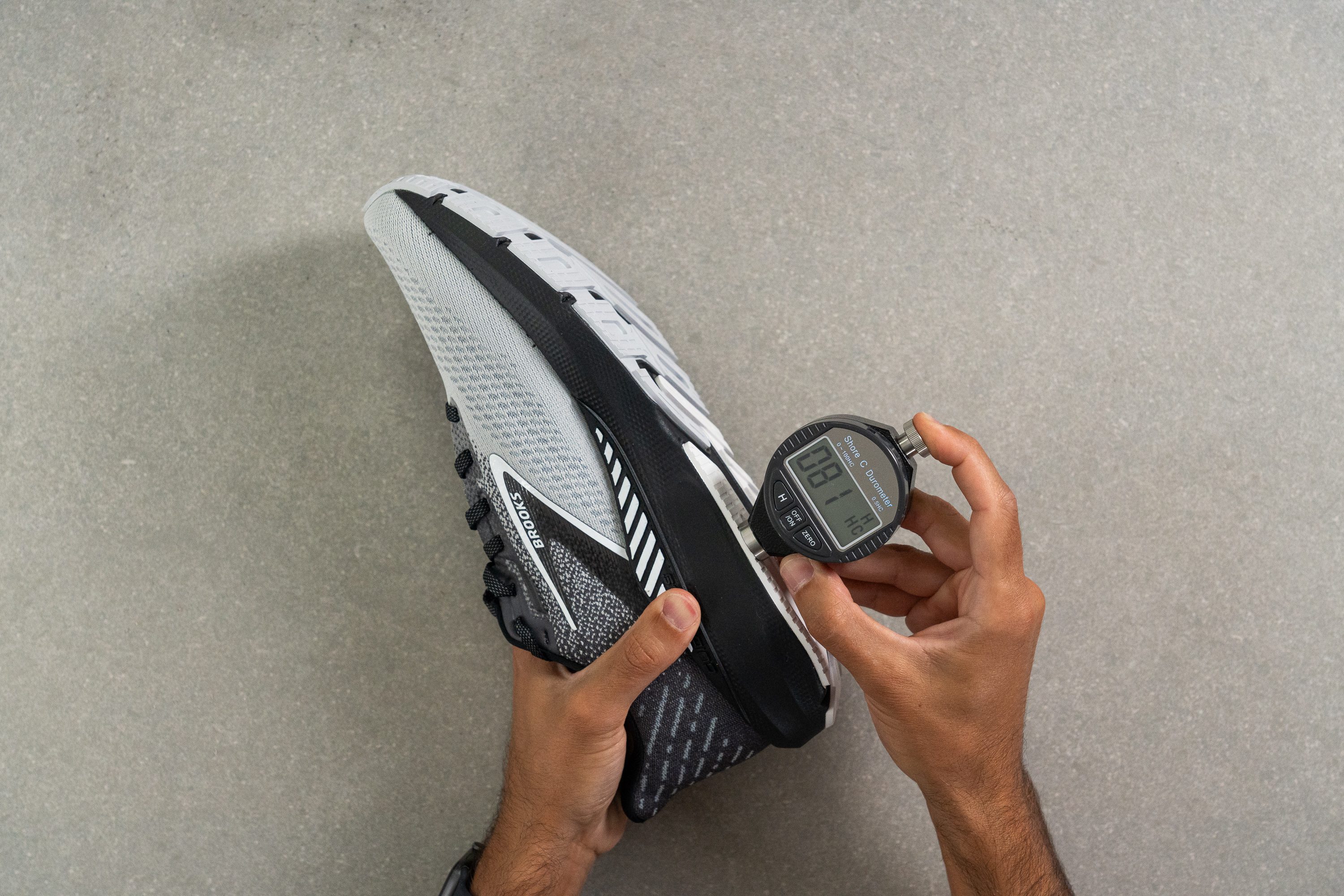
| Launch GTS 10 | 81.4 HC |
| Average | 79.2 HC |
Outsole durability
Thanks to the tough and durable rubber, the outsole stands up really well to our last Dremel test.
We measured an indentation of just 0.67 mm, and that's an absolutely fantastic result! It's proof that this outsole has what it takes to handle some serious wear and tear in the roads.
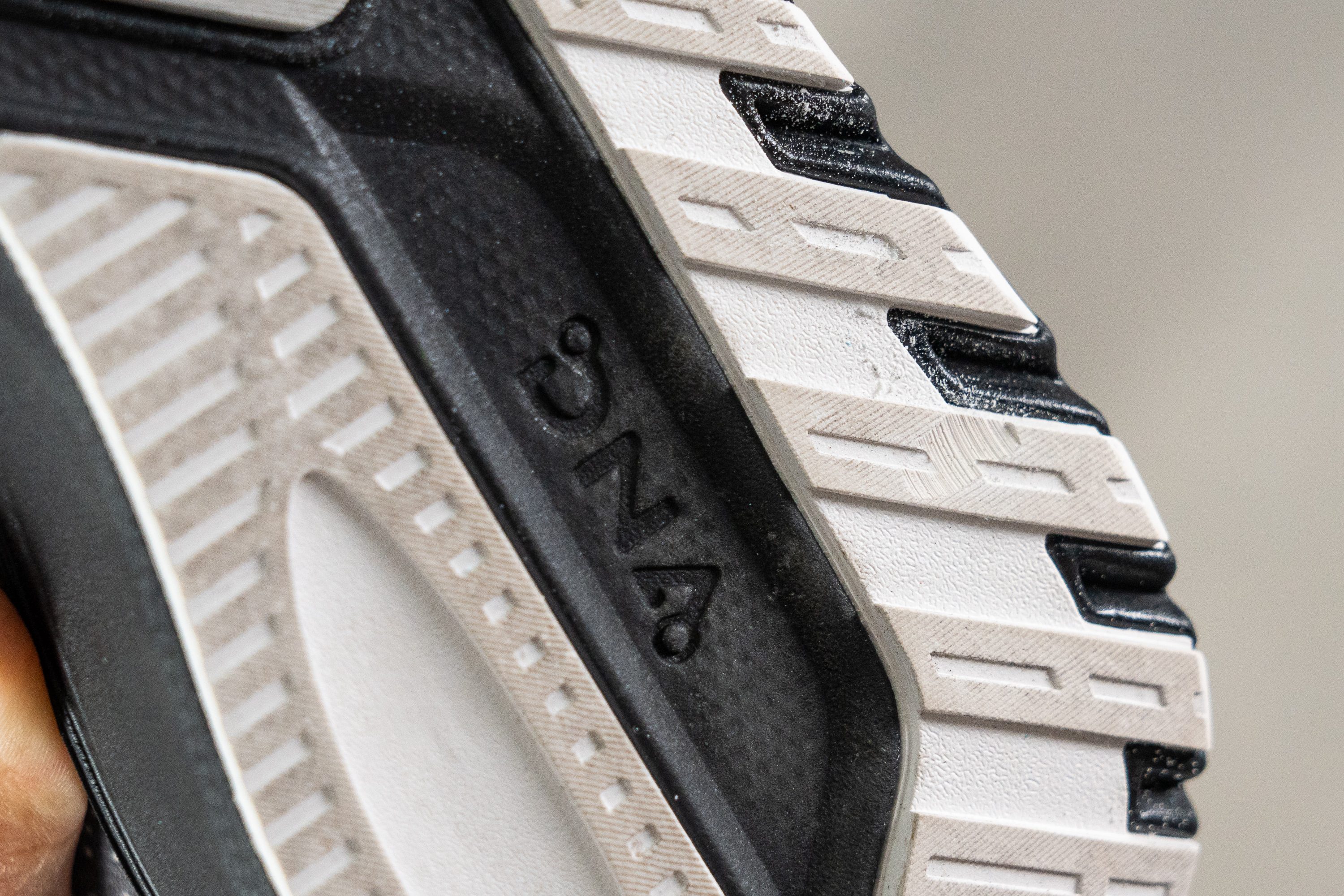
| Launch GTS 10 | 0.7 mm |
| Average | 1.1 mm |
Outsole thickness
Brooks has trimmed 0.2 mm off the outsole in the non-GTS version to help control weight. Yet the shoe still retains 3.2 mm, which we think is going to be enough for this one.
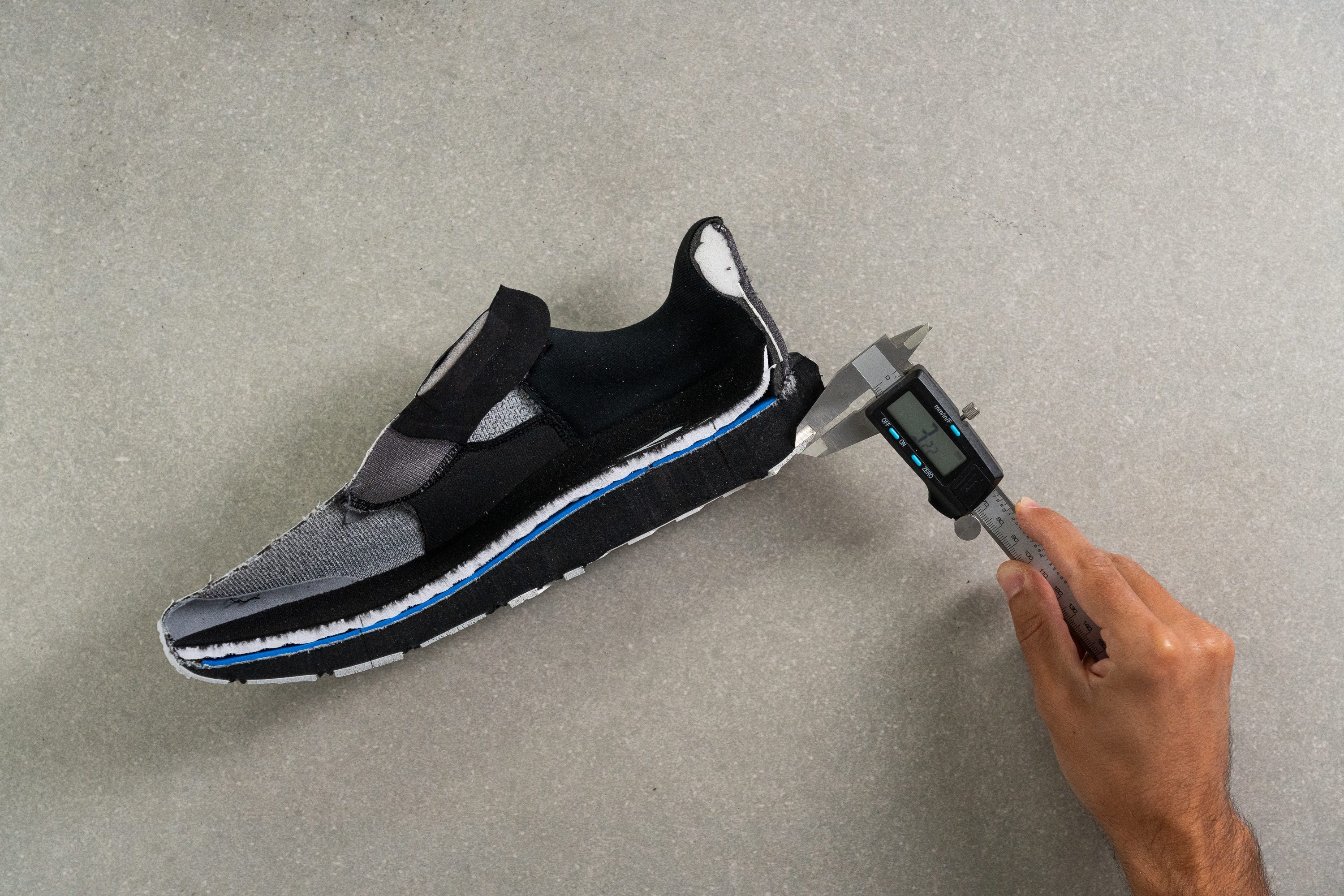
| Launch GTS 10 | 3.2 mm |
| Average | 3.2 mm |
Misc
Insole thickness
To enhance comfort, Brooks has chosen a really plush insole for the Launch GTS 10. We measured it at 6.4 mm, a thickness that adds to the shoe's comfort.
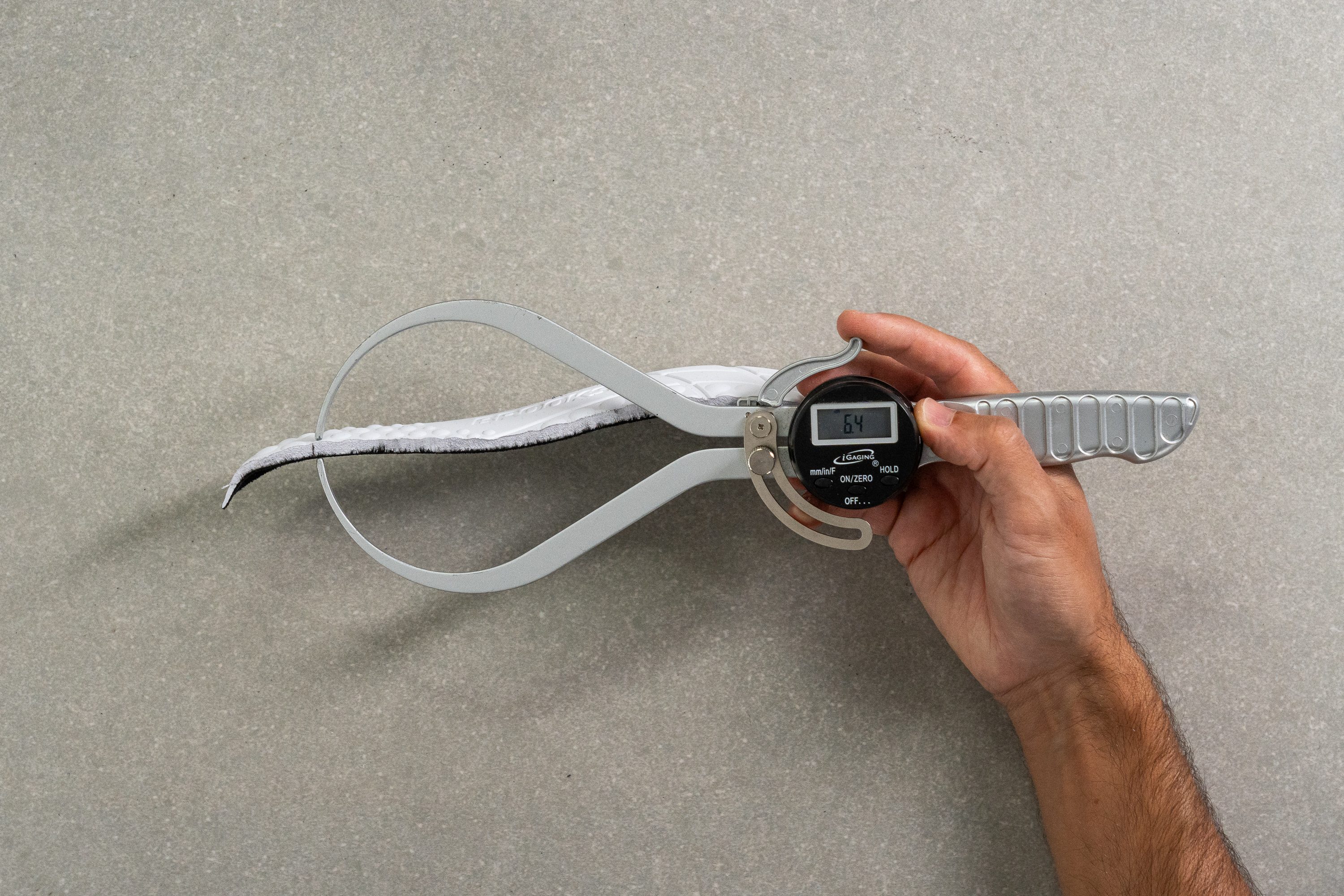
| Launch GTS 10 | 6.4 mm |
| Average | 4.5 mm |
Removable insole
On the positive side, the insole in this shoe is removable, so we were able to easily fit our own orthotics without any issue.

| Launch GTS 10 | Yes |
Midsole softness in cold (%)
When we exposed the foam to cold temperatures by placing it in the freezer for 20 minutes, it got firmer, and we measured it at 25.8 HA on the hardness scale. Despite this change, it still feels great.
The increase of 31.4% is close to the average for running shoes, and this finding aligns with our expectations.
The DNA foam in this shoe, made from EVA, is known to have less-than-stellar performance under cold temperatures.
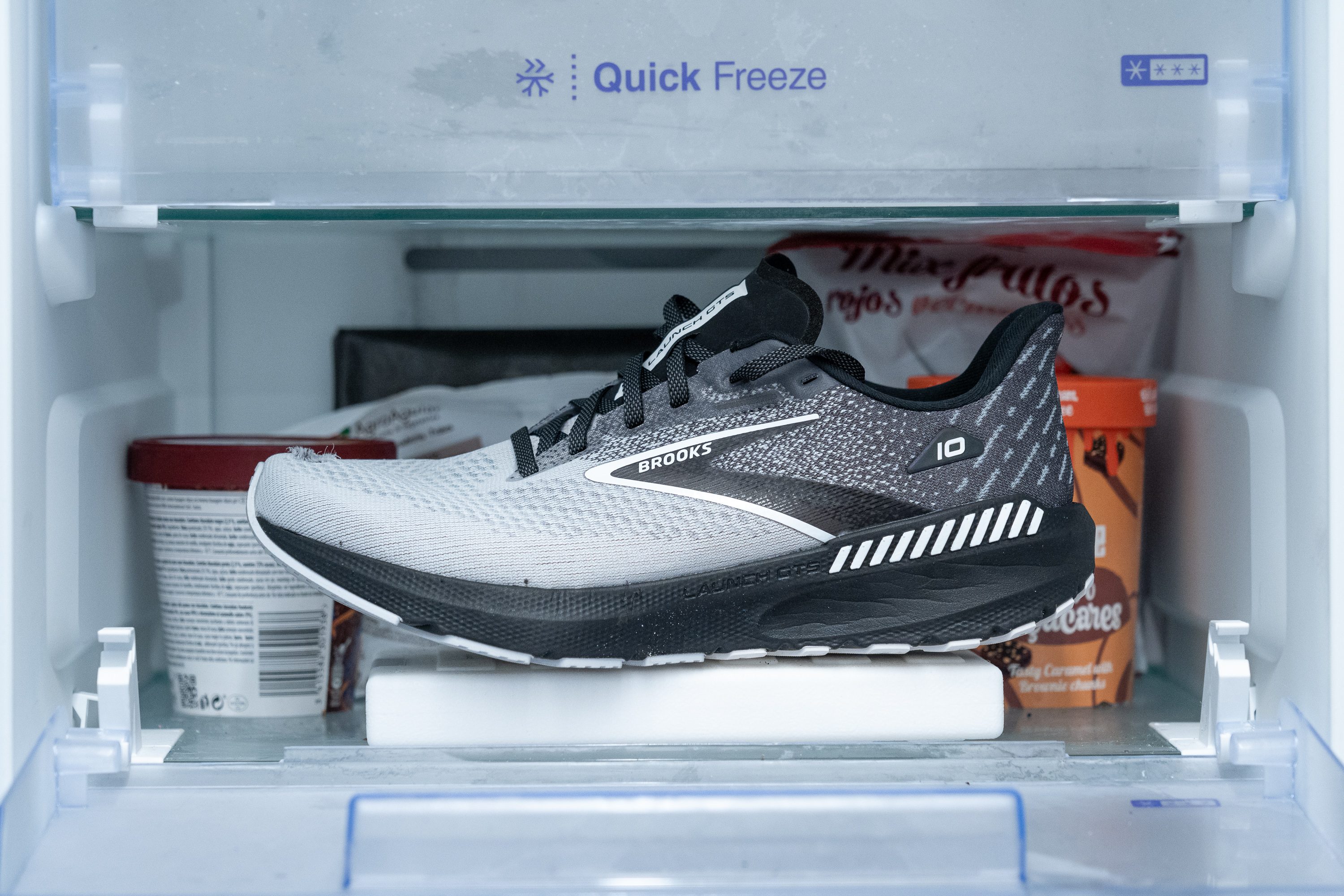
| Launch GTS 10 | 31% |
| Average | 24% |
Reflective elements
Unfortunately, as we feared, the upper of the shoe doesn't include any reflective elements. This is an area where Brooks has fallen short, and we hope they make improvements in the next update.
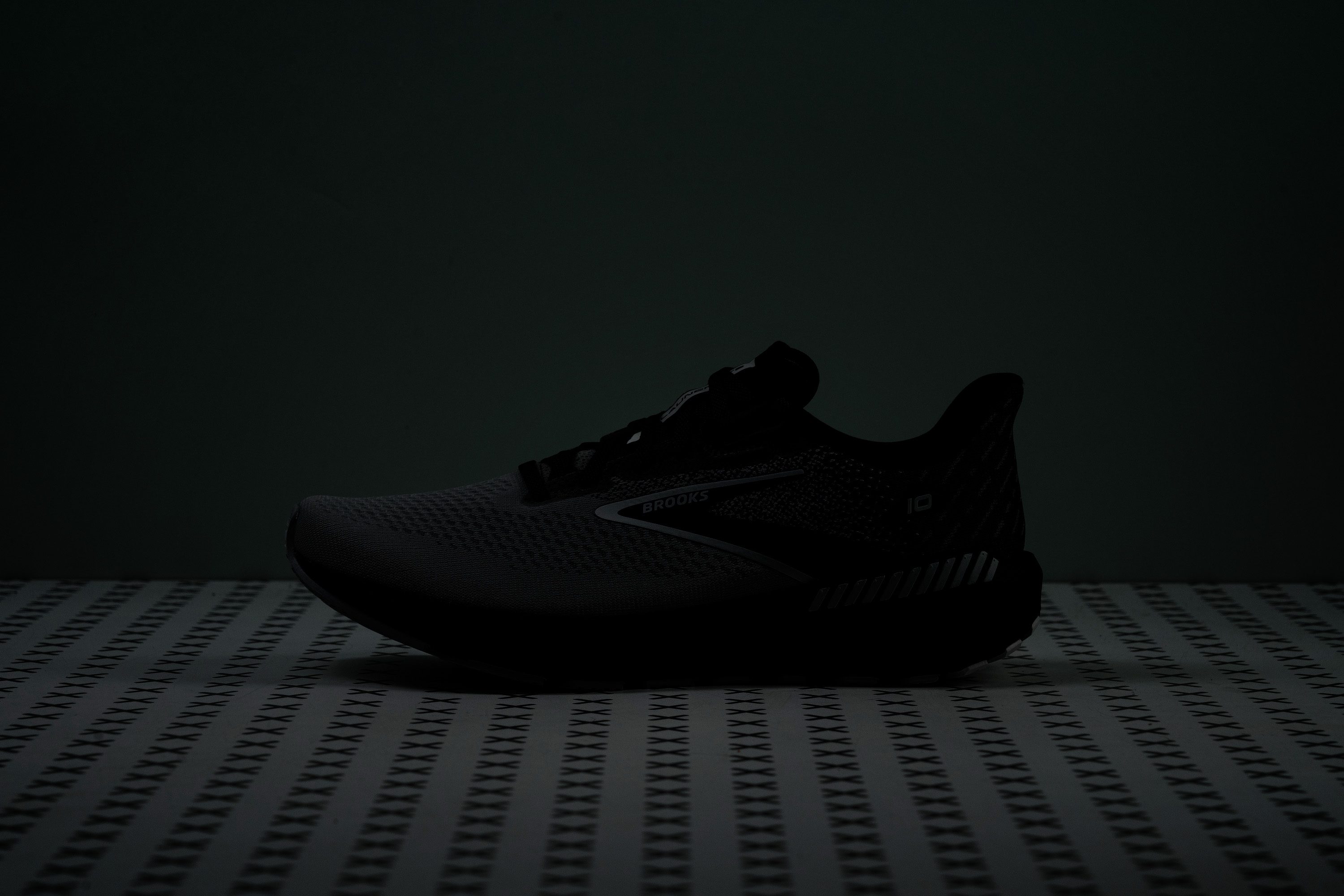
| Launch GTS 10 | No |
Tongue padding
Another great feature of the Launch GTS 10 is the padded tongue. Measuring 7.2 mm, it's plusher than most shoes on the market!
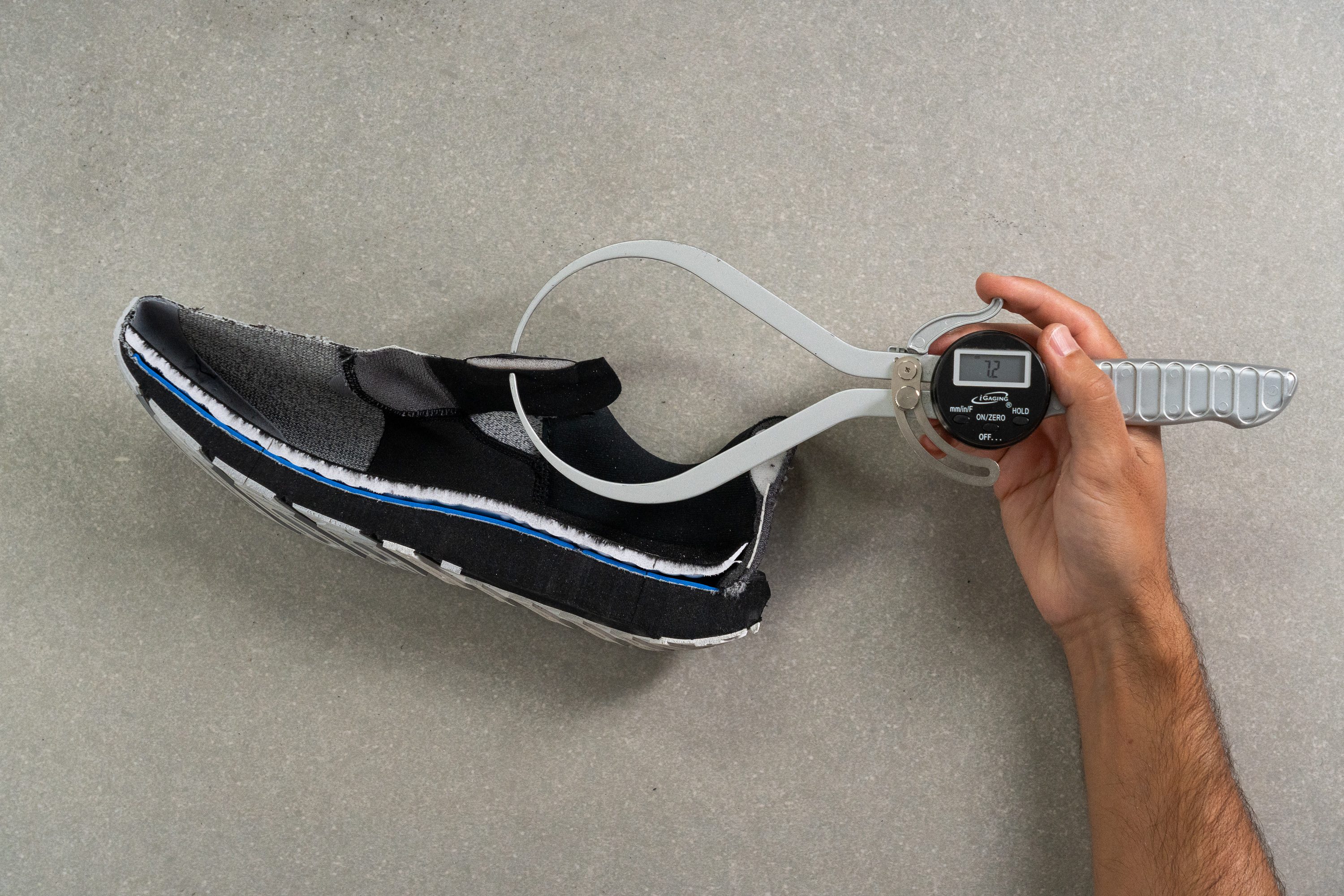
| Launch GTS 10 | 7.2 mm |
| Average | 5.8 mm |
Tongue: gusset type
The shoe comes with a semi-gusseted tongue, a feature that enhances the lockdown. It's surprising to find this feature in a shoe that costs only £110, as it usually doesn't appear in shoes at this price range.
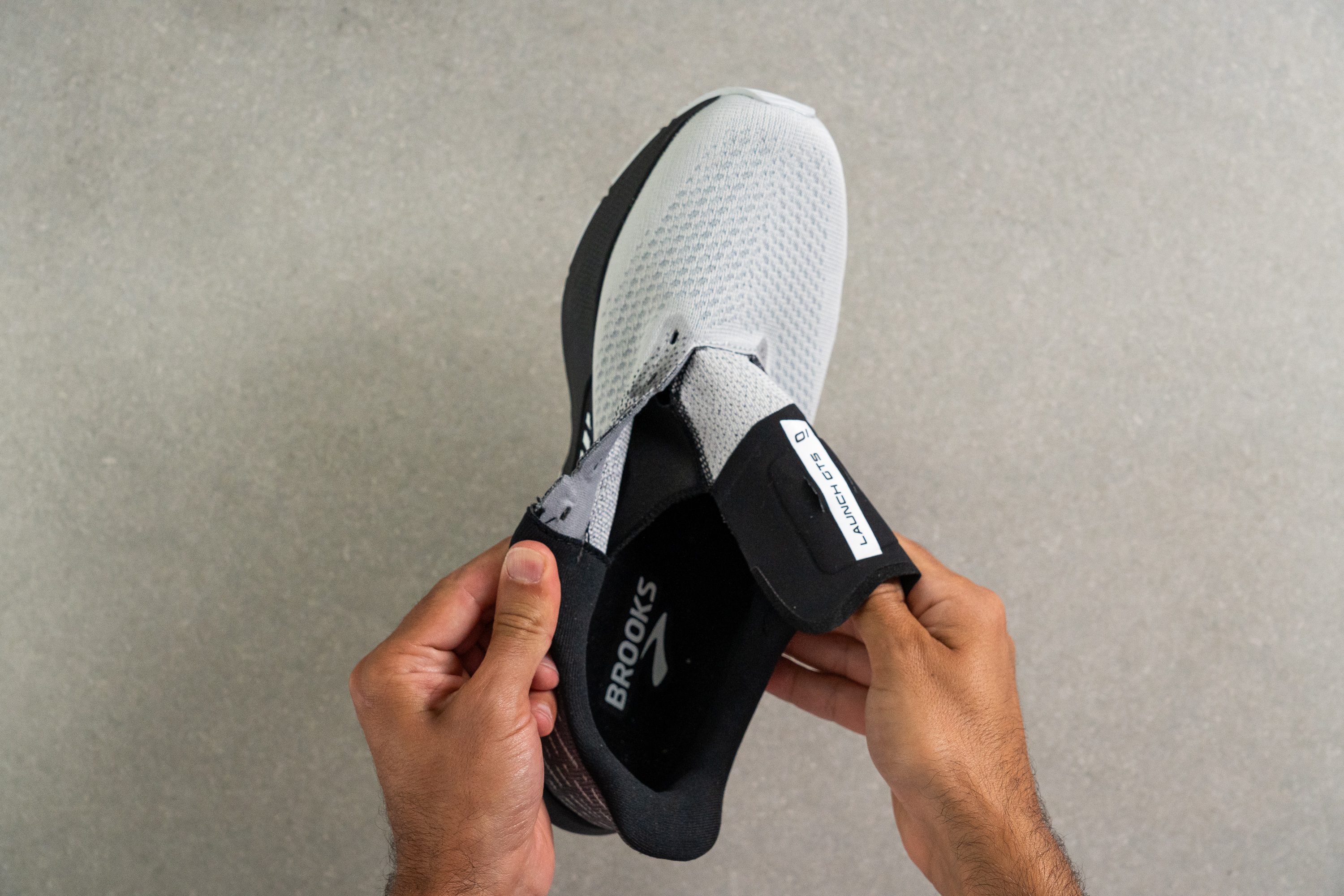
| Launch GTS 10 | Both sides (semi) |
Heel tab
Brooks has done the same thing they often do, leaving heel the tab off the Launch GTS 10.
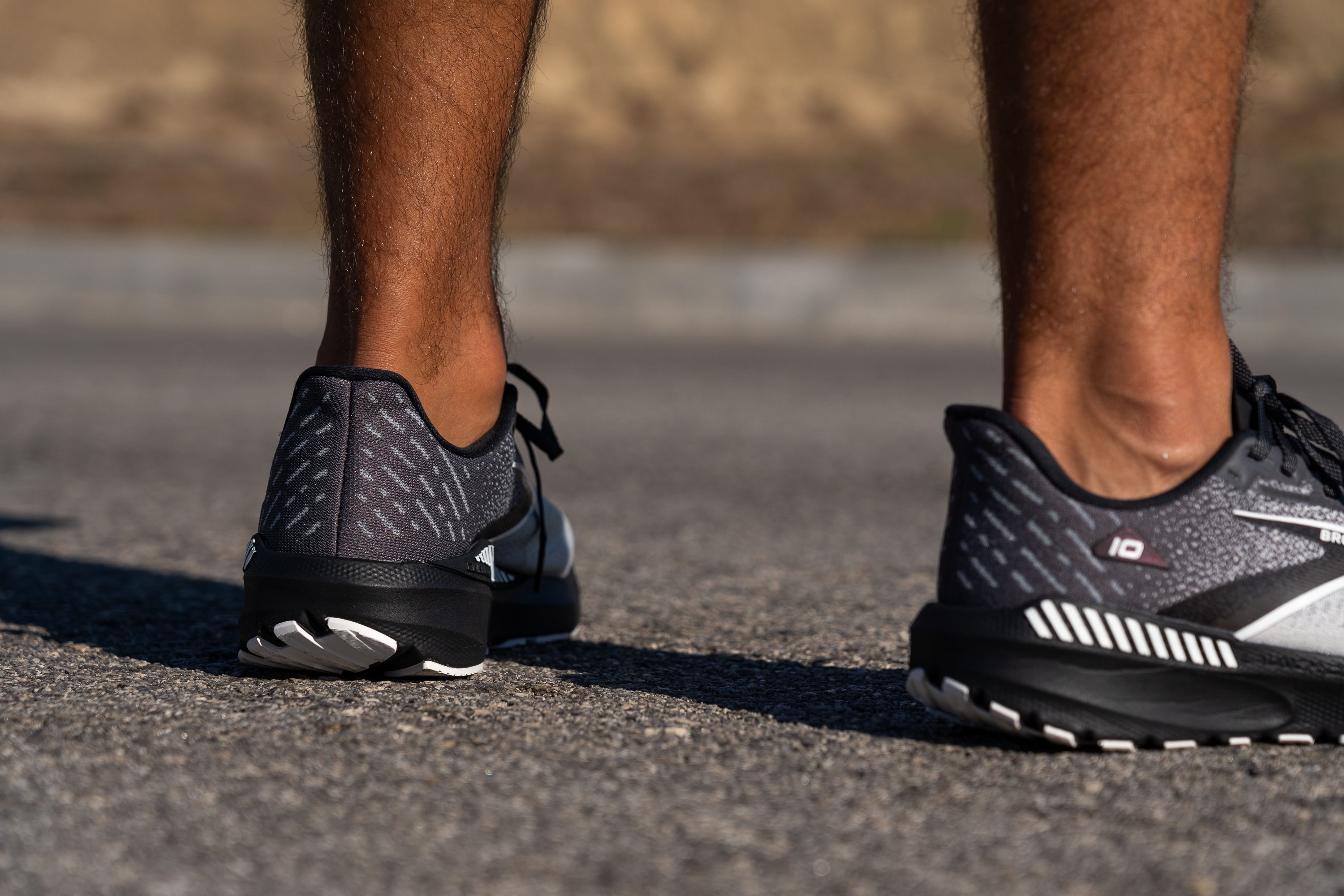
| Launch GTS 10 | None |

